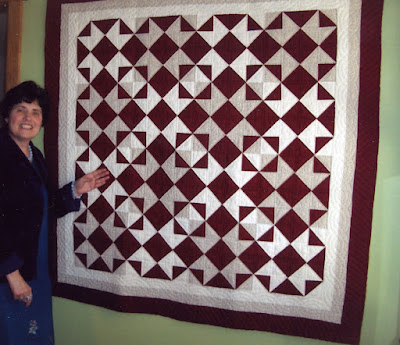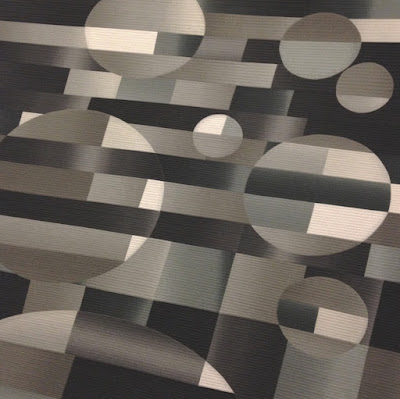I have been asked that question about many of my pieces of art. Sometimes I'm not sure how to answer that question. I'm not sure what they are really after. Do they think that I just whipped it out in no time and that makes me super woman? Or if I took a long time to make the piece that makes it more valuable because I spent a lot of time on it. Or is it just that they are really interested? So do I tell them that it took me 4 months which is the usual amount of time that it takes me to complete a piece? Or do I say it took me 35 years because that's how long I have been quilting and it took me that long to reach this point? Or even 60 years since I have been doing art at least that long? How do you answer that question? Funny thing is I have never asked any artist or quilter how long something took them to do. Maybe I already have some idea how long it takes. I do love when someone comments that they could do that like whatever it is is so easy to do. My internal dialogue when they say that is, "then why don't you?"
My quilting has certainly taken many twists and turns to reach what I currently make. I started as a traditional quilter and didn't even like art quilts. I machine pieced because I knew how to sew from many years of making clothing. I did only hand quilting at that point. I followed patterns because I was used to that from all the clothing I made. I figured out how to make quilts from books.
One of my first quilts was this red and cream one. We hung this quilt in our house for years until I gave it to my SIL because she loved it.
 |
| "Denise's quilt" |
Other early quilts.
 | ||
| "T.Rex and Others, too" made for my daughter. Machine applique and hand quilted. |
 | ||
| "Wedding Rings and White Roses" Machine pieced and hand quilted. | Queen size. | 1000 hours to make. |
 | |
| "Trick or Treat" Machine appliqued and machine quilted. I designed some of the costumes instead of just working from the pattern. |
Then I spent quite a few years making miniature quilts using paper piecing techniques. At one point in my quilt guild I was called the "paper piecing queen."
 | |
| "Kelsey's Quilt Shop" 13 inches. Made from a pattern in Miniature Quilts magazine. |
Other miniature quilts.
 |
| Wedding ring made for parent's anniversary. |
 |
| Civil war repro quilt. Machine pieced and appliqued. Machine quilted. |
Finally in 2004 I began making art quilts by taking a class at Quilt University from Susan Brittingham.
 | |
| "Over the Sea to Skye" Started in 2004. Finished in 2011. It sat for a really long time while I made other quilts. |
Then there was the quilt of my parents house.
 |
| "Grandma's House" 3 months from beginning to end |
I took classes and master classes from people like Elizabeth Barton, Ellen Lindner, and Natalya Khorover and tried to really move into art quilting. All the while I was still making traditional quilts. I still love traditional quilts. A lot of the art quilts you are already familiar with.
 |
| "Midwinter Visitor" made in class with Ellen Lindner |
 |
| My energy/environmental quilts. I swore I would never work in a series. I guess never say never! |
 | |
| "When the Dark Night Seems Endless" |
 |
| "Dawn on the Charles Bridge" |
There were plenty of original abstract art quilts along the way.
 |
| "Midwinter Night" |
 |
| "Sunlight in the Forest" |
 |
| "Light in Darkness" |
There were even quilts made from plastic bags.
 |
| "Abandoned Cement Works" |
This is just a small sample of the quilts that I have made over the years. When I started this quilting thing I never would have even thought that I could create my own original quilts. But here we are.
Sometimes I think we forget how much stuff we've actually made over the decades. So how long did a particular piece take to make? A really long time and many paths along the way.
Linking to Nina-Marie.
Thanks for reading.
Chris
Wow, Chris! What fantastic retrospective of your work!
ReplyDeleteYou certainly have an impressive body of work and I have enjoyed your voyage thru many of them. Bravo!
ReplyDeleteWhen I started reading this post, I didn't realize it was you as I'm only familiar with your later art quilting. Wow you have come a long way from traditional to phenomenal.
ReplyDelete